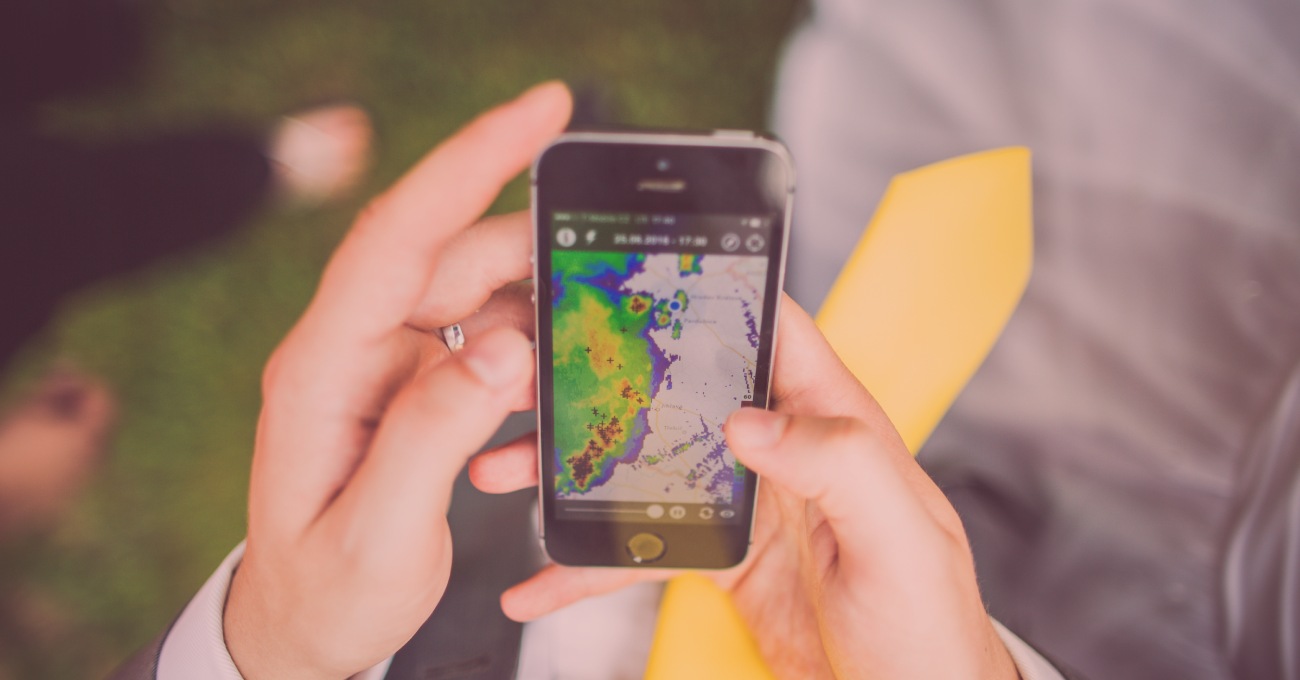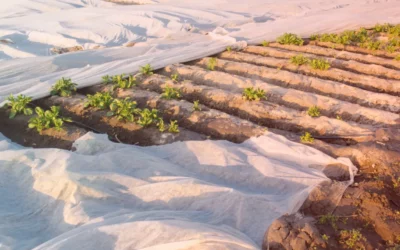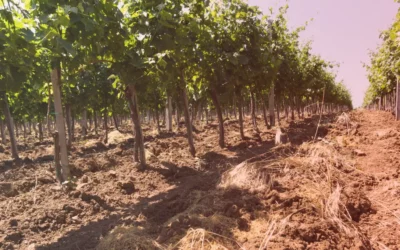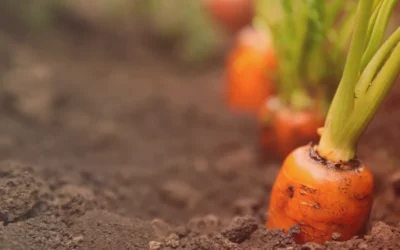The Future of Weather Forecasting With IoT
Throughout history, weather predictions have been based on observations and predictions made at a specific site. Nowadays, weather forecasters utilize data recorded by ground sensors and weather satellites to employ mathematical equations and generate “models” predicting weather patterns.
Forecasters predict these weather patterns by dividing the data into a grid formation. Each cell on the grid represents that region’s environmental conditions and might or might not use information from in-field sensors within the grid, highlighting a specific set of weather conditions such as temperature, humidity, and wind. In addition, mathematical equations can be used to forecast future conditions based on current conditions.
Weather predictions in “Smart Farming”
Accurate weather forecasting is critical in the agriculture industry. For example, farmers use weather data to determine how they should operate, staff, harvest, mitigate, etc, which poses a challenge. In addition, informed planting efforts will aid in timing the growth and reproduction of plant life to avoid frost.
Frost forecasting and prediction is one of the most critical elements of agricultural weather prediction. Frost can exact a heavy toll on plant structure, reproduction, and a farm’s financial status (through harvest yield). Avoiding seasonal extremes will aid farmers in cutting down costs and lead to more profitable production and farm management.
Weather forecasting is just one of the elements of Smart Farming. Beyond just weather, the practice utilizes technology and spatial data points that provide more context than traditional forecasting.
Let’s highlight essential aspects of this Internet of Things (IoT) driven technology:
- This technology communicates on different layers joining together a complex system that can provide real-time data on crop quality, pest issues, moisture content, soil composition, and more.
- Further advancements in technology, data management systems and security will improve the effectiveness of intelligent farming.
- It operates using the Internet of Things (IoT), an infrastructure comprised of intelligent devices (vehicles), buildings, and other physical devices outfitted with sensors, electronics, actuators, and network connections.
- Therefore, IoT is a crucial technology in intelligent farming. It ensures data flow between sensors and other devices, allowing it to add value by automatic processing, analysis, and access. This leads to more timely and cost-effective production and management effort on farms.
The forecasting process
Currently, Meteorologists use “models” to display present and future weather conditions. In practice, models are mathematical equations that assimilate data at grid points. Although, there is more than one type of model.
- Global Models – Are the most well-known and predict weather all across the globe. Two of the most commonly used global models were developed by the European Center for Medium-Range Weather Forecast (European model) and by the National Weather Service’s Global Forecast System (American model).
- Mesoscale Models – Focus on smaller regions and extrapolate data to make accurate predictions. For example, the North American Mesoscale Forecast System (NAM) and the High-Resolution Rapid Refresh (HRRR) are mesoscale models.
It’s possible to forecast different weather outcomes for a given location because these numerical models use and assimilate data differently, and use dissimilar approximations and parameterizations of the fundamental equations. These methods assume that if you put good initial data “in,” then you would get good “out.” Unfortunately, these assumptions are part of why forecasting is flawed, but another reason is that forecasting doesn’t address microclimates.
Predicting microclimate weather
Unfortunately, weather forecasts don’t know the entire planet’s weather current conditions but must estimate if a specific weather pattern will continue. In cases of frost forecasting, the climate is greatly influenced by microclimates and, as such, does not always follow regional weather conditions. Essentially, microclimates affect:
- Temperature
- Precipitation/moisture
- Wind
More specifically, microclimate factors such as topography, irrigation, shelter-belts, and windbreaks are more likely to affect crop production:
- Topography – Refers to the form of the landscape, such as steepness, shape, and slope aspect. Even within a relatively small area, topography can create variations in temperature, moisture, and exposure to sun and wind.
- Irrigation – High crop water demand can lower the temperatures, increase the area’s relative humidity, and ensure extended periods of dew and leaf wetness or spawn diseases.
- Shelterbelts/Windbreaks – Natural windbreakers can reduce wind flow, reduce evapotranspiration from crops, and require less water overall. Potentially higher crop yields near shelterbelts are due to excess moisture.
Current weather models cannot determine whether individual fields remain suitable for planting due to a lack of representative data. However, increasing the availability of microclimate data has been shown to improve the assessments of climate suitability for farmer’s crops. Helping growers make more informed decisions will require the use of IoT technology.
Farm forecasting with IoT
It is difficult to rely on historical weather patterns to operate farms partially because of climate change. Instead, forecasting on a field-by-field basis using microclimate data paired with IoT is more likely to increase productivity and lower risks.
IoT is becoming popular in farming because of its scalability, adaptability, and traceability. However, a reliable IoT system is complex, and it should include the following layers:
- Device Layer – makes up the physical aspect of the system or the “things” that can automatically identify, actuate, sense, and have a connection to the internet.
- Network Layer – relays the data to the network or cloud by communication protocols.
- Application Layer – stores and allows end-user access to the processed data.
The Device Layer
The device layer of an IoT system consists of the physical “things” that collect, measure, and communicate data using an internet connection. Sensors can collect the data and share it with the cloud. For example, simple weather stations could be stationed at different points of interest to collect data related to changing topography.
These devices can also receive information from the cloud and activate or deactivate an irrigation system to reduce water usage or keep crop conditions ideal. In addition, other sensors and actuators could be installed on other agriculture equipment such as tractors.
Other physical devices could improve machinery efficiency and route planning for seeding, fertilizing, or pesticide applications. The use of physical IoT sensors and actuators was expected to increase from 30 million in 2015 to over 75 million in 2020. As of now, data is underutilized, but its use is growing steadily.
The Network Layer
This layer includes devices that communicate data wirelessly to the cloud, like a platform or application, where it can be stored and sent to actuators to manage other pieces of agricultural equipment. The centralized system commonly uses wireless communication such as RFID or WSN, Long-Range, and even Near-Field Communication (NFC).
Mobile devices have also started playing a role in IoT and are very adaptable to technological needs. They can serve as a gateway for data, store data, and take on more administrative tasks like applying updates to other critical systems.
However, they use 3G, LTE, and 5G communication through cellphone towers. Such methods can struggle in rural areas where farms and fields are located.
The Application Layer
An essential part of the IoT system is that it gives farmers the ability to analyze the data and make decisions for their farms. This layer includes APIs or Application Programming Interface that store, process, and access collected data for reference.
In addition, these APIs are necessary to allow for accessible communication among all IoT devices. The existence of APIs is a boon for the agriculture industry because it gives smart farming the ability to manage many activities, the most relevant being forecasting weather events and implementing farming duties.
Uses of IoT-driven data
Forecasting with IoT will utilize several analyzed data streams and can predict concrete events, such as frost forecasts. So, it is reasonable to say that inputting IoT data can more accurately assess weather conditions on a farm and field basis. With a bit of work, these systems will evolve.
Using the data collected by IoT sensors, the weather models could include the finer grid points relating to fields and farms. Meteorologists would not have to assume, estimate, or project different scenarios to accommodate unknown conditions because microclimate data would be readily available. In terms of arable farming, IoT data could help with:
- Analyzing historical temperatures and potential frost dates to determine trends and predict accurate planting timeframes.
- Providing information on which fields consistently produce higher yields for particular crop production and predicting future production.
- Simulating data, similar to how the American and European models generate forecasts, to assist in determining the best months to sow fields.
The pinnacle of IoT systems utilizes “machine learning” to automate data analysis, interpret patterns and make decisions with very little human intervention. However, IoT systems are not infallible, and utilizing the data will require that farmers use their expertise to analyze the information before making final decisions.
The future of agriculture
Current IoT limitations cannot account for some aspects of agriculture. As mentioned, IoT is by no means perfect and has many hurdles to tackle in its current state.
The main issues that still delay the widespread use of IoT to collect microclimate data are the expensive equipment used to build these systems and the knowledge necessary to operate, maintain, and expand them. This is why professionals like Benchmark Labs exist. Benchmark Labs aims to improve modern weather forecasting through innovative tactics by employing the best scientific tools and datasets available.
This company provides site-specific weather data using IoT devices to aid its clients in better decision-making. Benchmark Labs is dedicated to providing farmers’ the ability to optimize their irrigation practices, carefully track frost and heat spike risks, improve pest and disease management, and optimize labor scheduling.
Benchmark Labs’ top-of-the-line systems can store and analyze historical data to compare growing seasons. If your farm needs to identify places of improvement, let Benchmark Labs design a unique approach that employs machine learning to analyze and interpret weather patterns from your specific site and provide a personalized weather forecast resulting in a better bottom line.
Article summary
The agriculture industry relies on traditional weather forecasts to manage arable farming. In most cases, meteorologists use data from various grid points and use mesoclimate models to predict trends.
This practice leaves room for error and farmers act on this information, thereby subjecting their farms to risk. However, by adjusting forecasts with microclimate data (data that considers topography or shelterbelts), companies like Benchmark Labs use the IoT or Internet of Things to collect data on a field-by-farm basis instead.
The IoT is a layered system of intelligent devices capable of recording data, determining trends, and predicting concrete events with very little human intervention. Benchmark Labs assists farmers with Smart Farming which utilizes IoT to make more informed decisions using weather conditions specific to their farms. Benchmark Labs is dedicated to optimizing their clients’ farms and increasing profitability.
If you would like to learn more about Benchmark Labs from our team and sign up for a trial, go to our sign-up page.
Recent Posts
Frost Forecast Is Going To Change With IoT Devices and Machine Learning
[dssb_sharing_button icon_bg="#636979" _builder_version="4.16" _module_preset="default" background_color="#324155"...
Vineyard Soil Testing is Evolving Thanks to IoT Tech
[dssb_sharing_button icon_bg="#636979" _builder_version="4.16" _module_preset="default" background_color="#324155"...
Advantages and Disadvantages of Conservation Tillage Methods
[dssb_sharing_button icon_bg="#636979" _builder_version="4.16" _module_preset="default" background_color="#324155"...




